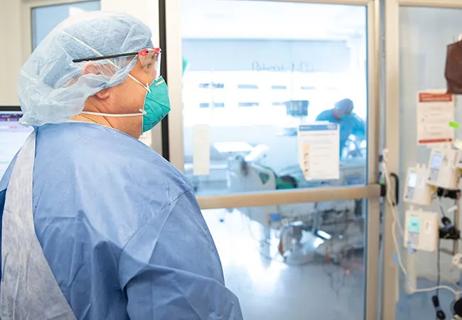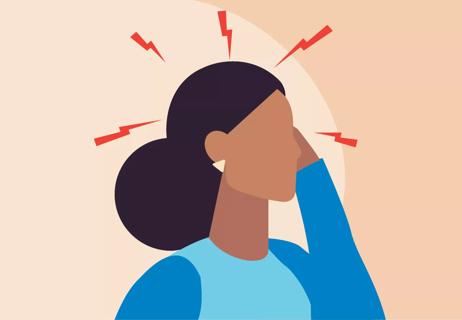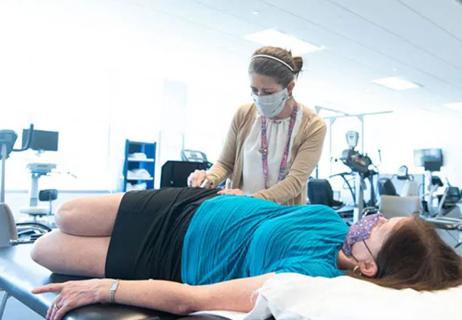Co-author surveys what’s notable from first update in 10 years

The American Academy of Sleep Medicine (AASM) recently published clinical practice guidelines on diagnostic testing for adult obstructive sleep apnea (OSA) in the Journal of Clinical Sleep Medicine. This marks the first update in 10 years on the topic from the AASM, the premier organization in this field.
Cleveland Clinic is a non-profit academic medical center. Advertising on our site helps support our mission. We do not endorse non-Cleveland Clinic products or services. Policy
Consult QD sat down with Reena Mehra, MD, MS, Professor of Medicine and Director of Sleep Disorders Research in Cleveland Clinic’s Neurological Institute, to find out what physicians should know from the new guidelines. Dr. Mehra was one of seven members of the AASM task force that developed the recommendations after a systematic appraisal of the literature using GRADE methodology to provide specific grades of recommendations utilizing standard approaches.
Q: What’s new in the field of OSA diagnostics?
A: There is now good evidence supporting home sleep apnea testing as a viable alternative to polysomnography and a reliable method for diagnosing OSA in uncomplicated adults who have a high probability of having moderate to severe OSA based on clinical signs and symptoms. With home testing, patients can spend the night in their own bed instead of a sleep laboratory, and home testing offers better comfort by requiring fewer leads to be worn while sleeping.
Although the majority of patients prefer home testing to polysomnography due to increased convenience, data suggest that a significant percentage — approximately 24% — still prefer full polysomnography, likely because it provides a much higher level of detail of sleep physiology. It’s also important to consider that home sleep apnea testing is not monitored by a technician, so leads can get dislodged. This can result in a suboptimal study that would need to be repeated, which somewhat undercuts the convenience advantage of home testing.
A key contribution of the new guidelines is that they provide the clearest recommendations to date on when home testing is appropriate as an alternative to polysomnography.
Q: So in which circumstances is home testing not an option, according to the guidelines?
A: Polysomnography is the sole recommended diagnostic method in patients with any of the following:
It should also be emphasized that the guidelines advise that patients undergo polysomnography if home sleep testing proves negative or inconclusive for OSA. Because home testing is recommended only for patients with a high probability of having OSA, negative results merit a second, more thorough examination with polysomnography.
Q: What are some other highlights of the new guidelines?
A: The guidelines spotlight two “good practice” recommendations, namely:
Additionally, the guidelines recommend against the use of clinical tools, questionnaires or prediction algorithms as a substitute for home sleep testing or polysomnography to diagnose OSA in adults. This was graded as a strong recommendation.
Q: What do the new guidelines contain that might surprise physicians?
A: Not too much, actually. Home sleep apnea testing has been in vogue now for quite a while in the field of OSA. What is new is that several clinical studies — seven randomized controlled trials and 26 validation studies — have now been conducted to evaluate its efficacy relative to polysomnography and various questionnaires and prediction algorithms designed to diagnose OSA. Our task force spent several years systematically collecting the data necessary to create this guideline, and for the first time we could make strong recommendations backed by reasonable clinical evidence.
Q: Is it unusual that it took so long to develop these recommendations?
A: We performed a very exhaustive search of the literature and considered recommendations carefully. Home sleep testing is less expensive than polysomnography, so reimbursement is lower, to no one’s surprise. So we knew the new recommendations would be intensely scrutinized — not just by physicians but by hospital administrators, insurance companies and government payers.
These guidelines not only will form the basis of best clinical practices but will also have real-world consequences for when polysomnography is deemed allowable by those footing the bill. Already we’ve seen insurance companies requiring justification for polysomnography testing.
Q: What’s next in this field?
A: Existing studies are mostly of white men. More data are needed on women and minority groups and in subgroups such as patients who also have cardiopulmonary symptoms. Women with OSA tend to have different symptoms than men do, such as fatigue, and OSA tends to manifest during the postmenopausal phase, which is a period when OSA prevalence increases.
We could also use better clinical screening tools to help predict the presence of OSA, particularly in patients with cardiovascular disease and heart failure. Identification of biomarkers that can detect sleep-disordered breathing and predict the likelihood of adverse outcomes is an exciting new research avenue that could advance diagnostics.
Finally, both home sleep testing and polysomnography could be refined. Polysomnography monitoring could be made less intrusive to increase patient comfort. Split-night testing, in which continuous positive airway pressure treatment is provided partway through the night to assess improvement, is a helpful diagnostic pathway that hasn’t been adequately studied. Home sleep testing also needs more research in populations who are currently excluded from the recommendations, such as those with possible hypoventilation or central sleep apnea.

Q&A with Brain Trauma Foundation guideline architect Gregory Hawryluk, MD, PhD

Q&A with newly arrived autoimmune neurology specialist Amy Kunchok, MD

A neurocritical care specialist shares what’s spurring growth of this new evaluation approach

Focused ultrasound offers a newer alternative to deep brain stimulation

Prehabilitation can help improve outcomes after spine surgery

Get ready for central vein sign and optical coherence tomography

How these new drugs fit into practice two years out from their first approvals

A conversation on the state of physiatry with the AAPM&R’s Vice President